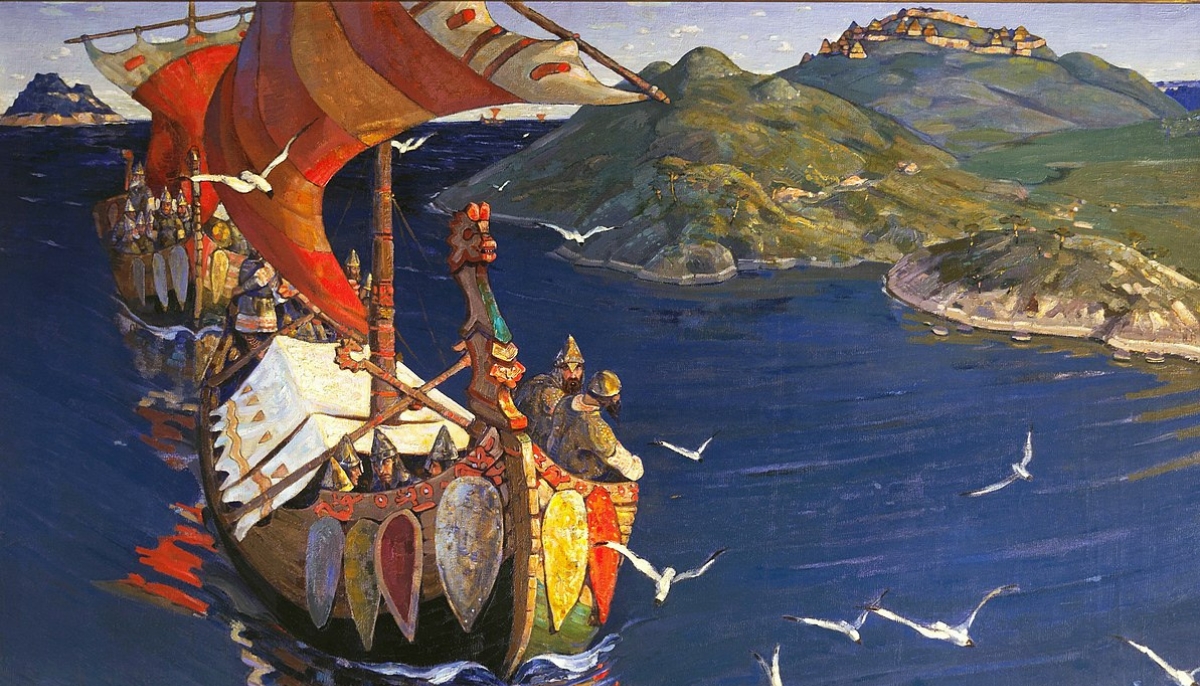Welcome to an in-depth look at the Varangian Guard weapons that struck fear into the hearts of foes and carved out a legacy in medieval warfare.
From razor-sharp swords to imposing helmets and armor, explore the arsenal that made this elite unit one of the most formidable in history.
If you’re fascinated by the blend of Viking grit and Byzantine sophistication, this article is for you. Read on to uncover the secrets behind the Varangian Guard’s military might.
Varangian guard Swords and Axes
The Varangian Guard were no ordinary warriors; they earned the intriguing title of “Axe-Bearing Barbarians.” This nickname alone tells you much about their preferred weaponry, rooted deeply in their Viking heritage.
Danish Hafted Axe

The Danish Hafted Axe was a staple in the Varangian Guard’s armory. Known for its intimidating presence on the battlefield, this weapon was far from ordinary.
Its long shaft, measuring 1 to 2 meters, gave its wielder an impressive reach, allowing for devastating swings that could break enemy lines and cleave through armor.
The mere sight of these axes, often towering over the soldiers who held them, added to the Varangian Guard’s fearsome reputation. They symbolized power and instilled psychological dread in the opposition, making the Varangian warriors appear larger than life.
single-handed Scandinavian Longswords
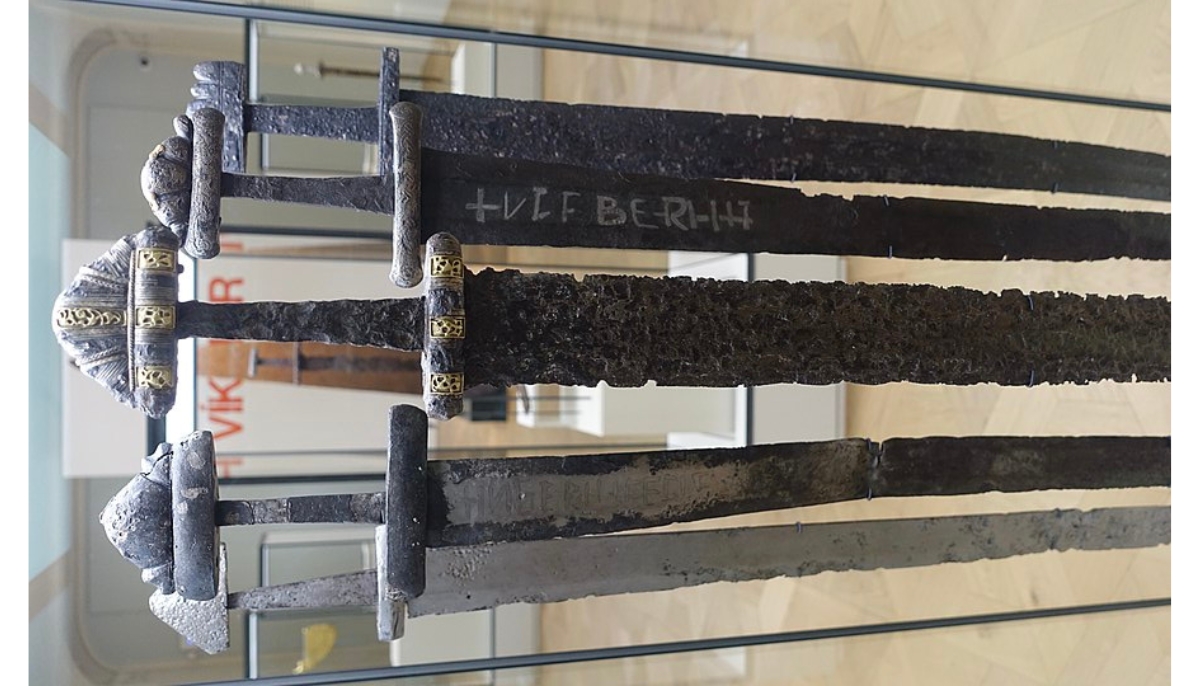
Though the Danish long axe was a two-handed weapon of destruction, they also wielded various other arms. Among these were the long, single-handed, double-edged Scandinavian swords, which were likely carried with them from the western regions.
In Norse culture swords weren’t just pieces of metal designed for combat; they had profound cultural and symbolic significance.
Owning a sword was a big deal. Crafting one of these blades was expensive, often adorned with intricate designs, silver accents, and inlays. To have a sword was to hold a sign of high social status, an emblem of honor and respect among peers.
Adding another layer to the cultural complexity of swords was the Norse practice of “killing” them. Once a blade was bent out of shape, making it unusable, it was considered “killed.”
This was not merely a form of decommissioning; it likely served a dual purpose. On the one hand, the ritualistic “killing” could have been a way to honor the warrior who wielded it.
On the other, it could act as a deterrent against grave robbers, protecting the sanctity of a Viking’s final resting place. They were extensions of the warrior’s identity.
Byzantine Influence on Varangian Guard Weapons
While the Varangian Guard was deeply rooted in Norse culture, the Byzantine Empire inevitably influenced their armory.
Serving as elite troops for the Byzantine Emperors, they had access to an array of Byzantine weapons.
Rhomphaia
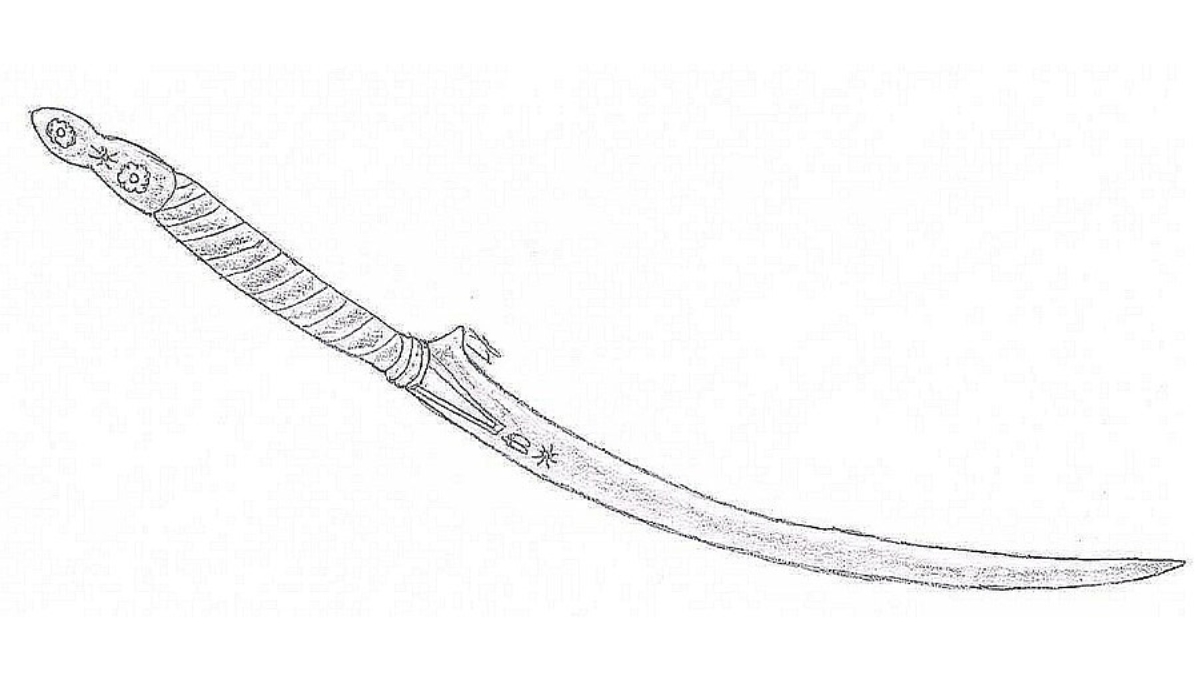
Besides the renowned Danish axe, the Varangian Guard was also identified by the “rhomphaia,” a unique edged weapon.
This weapon was in close attendance to the Byzantine Emperor and was visually distinctive. Carried on the shoulder, primary sources conflict on whether it was single- or double-edged.
Spears: Kontarion and Menavlion
Close combat troops, infantry, and cavalry, frequently employed a spear called the “Kontarion.” This spear had varying lengths and was a staple among Byzantine forces.
Additionally, specialist infantry known as “Menavlatoi” utilized a unique, heavy-shafted weapon called the “Menavlion.”
Though its exact nature is debated, it was mentioned in early Byzantine tactical manuals like the Sylloge Tacticorum.
Byzantine Swords: Spathion and Paramērion
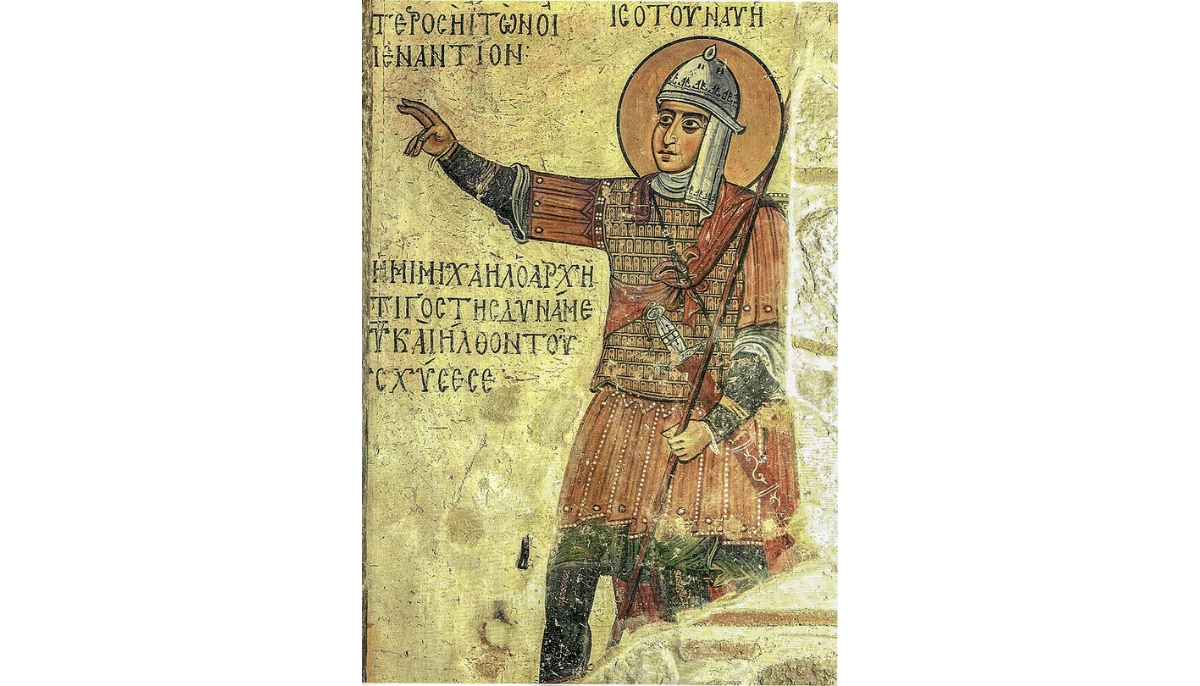
The Byzantine arsenal also included different types of swords. The “Spathion” was a straight, double-edged sword, somewhat similar to the traditional swords found in Western Europe.
On the other hand, the “Paramērion” was likely a single-edged, possibly slightly curved, saber. These options provided versatility for close combat.
Single-Handed Axes
In addition to their famous double-handed Danish axes, Varangians also used smaller, single-handed axes for more agile combat scenarios.
The Varangian Guard became a more versatile and formidable fighting force by adopting Byzantine weaponry.
Their armory, a mix of Norse tradition and Byzantine innovation, made them one of the most feared military units of their time.
Varangian guard armor

While there’s much discussion about the weapons the Varangian Guard wields, their armor is equally intriguing.
Although few specifics about Varangian armor appear in historical texts, we can make educated guesses based on the Byzantine military tech of the time.
Basic Armor: Kavadion and Epilōrikion
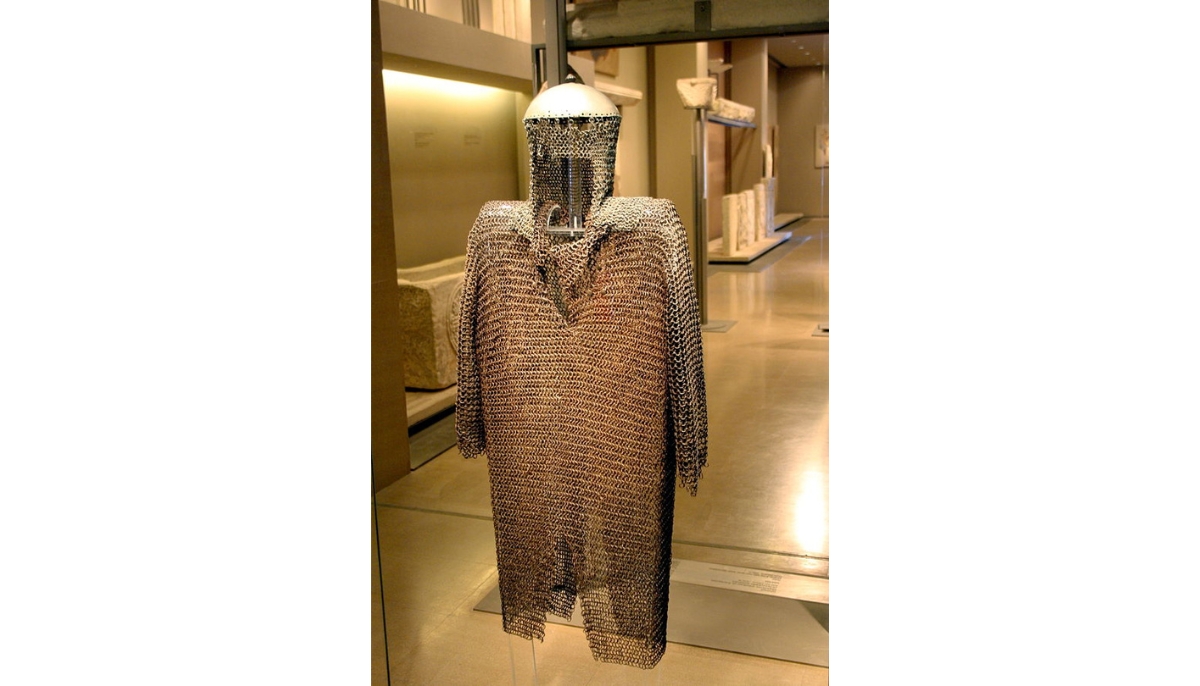
The Byzantine military commonly wore a padded textile garment called the “Kavadion.” Similar to the “jack” or “Aketon” in Western Europe, this soft armor reached just above the knees and had elbow or full-length sleeves.
Sometimes, the Kavadion served as an arming doublet worn under metal armor for added protection.
Metal Armor: Choices and Types
Byzantine soldiers had a range of metal armor, including mail, scale, and lamellar.
The mail and scale armors were similar to what you’d find in Western Europe, covering the torso down to mid-thigh or knee.
The Byzantine lamellar, however, was a unique and highly effective piece of armor, particularly resistant to cutting and piercing.
Klivanion: The Elite’s Choice
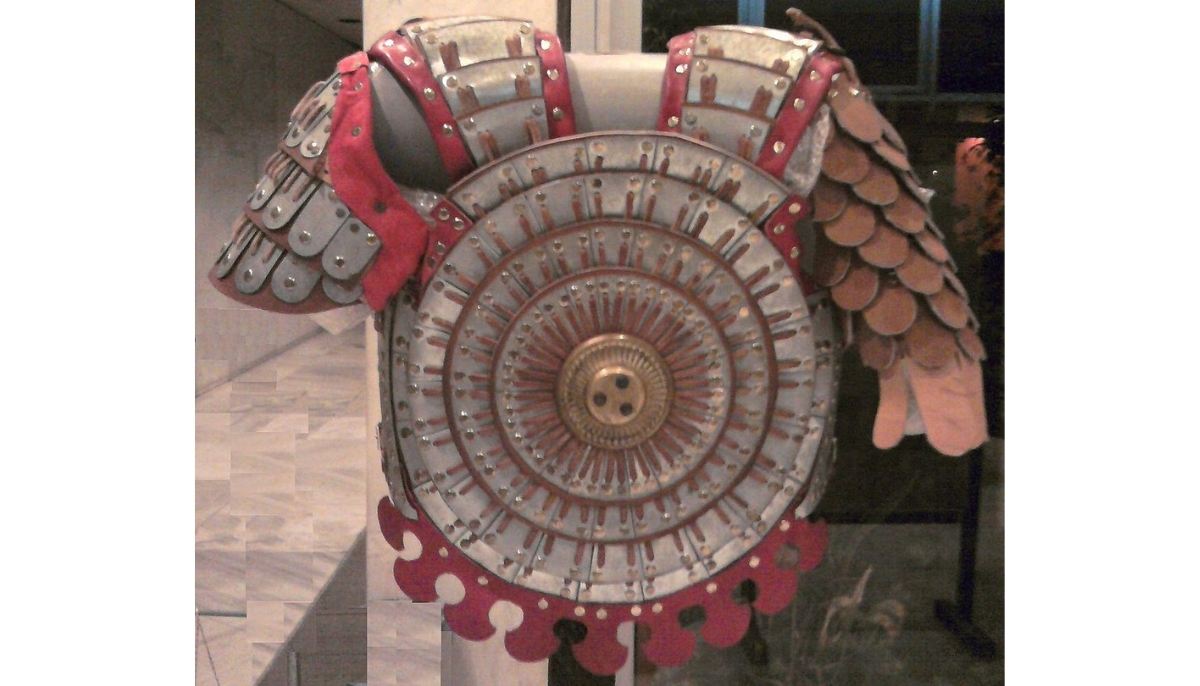
This lamellar armor, called “klivanion,” was probably the most expensive to produce and thus restricted to elite units.
Unlike more flexible types of armor, it covered only the torso, often worn over a mail shirt for comprehensive protection.
Additional Protection: Kremasmata and More
The “Kremasmata,” a skirt-like garment reinforced with metal splints, often complemented the Klivanion. This piece provided protection to the hips and thighs.
While arm protection isn’t often mentioned in Byzantine sources, we do know that knee-high boots were common for lower-leg defense.
Varangian Guard: What We Know
Historian Anna Komnene mentions Varangians getting quickly tired due to the weight of their armor at the battle of Dyrrakhion in 1081. This suggests they did wear some form of heavy armor, likely provided by the wealthy Byzantine state.
In the context of Western and Northern Europe, the most advanced armor was the “byrnie” or “brnja,” a mail shirt.
However, given the Byzantine’s superior options, it’s plausible that Varangians would have been equipped with Byzantine lamellar armor, especially since they served in a capacity akin to modern special forces.
Varangian Guard Helmets: A Fusion of Western and Byzantine Design
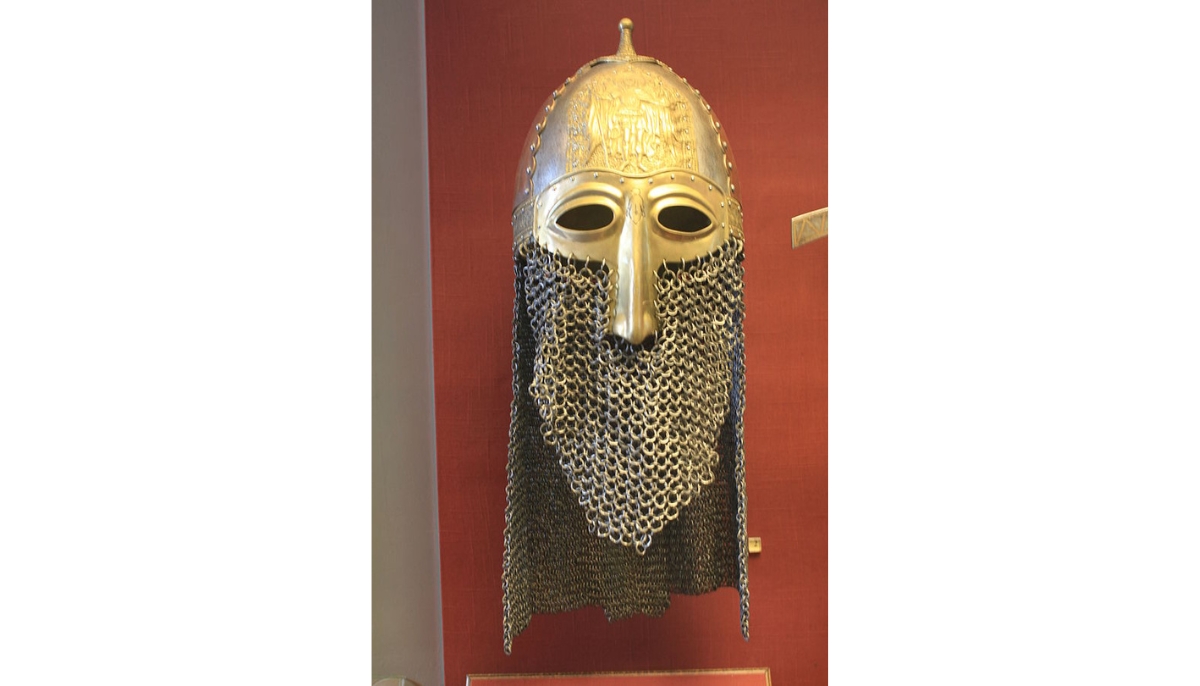
In Western Europe, the prevalent helmet design was the conical helmet featuring a nose guard or nasal. Vikings did not wear horned helmets. That is a myth.
Soldiers also wore mail hoods or coifs, and some helmets had a mail curtain, known as an aventail, attached for extra protection.
Byzantine Helmets
Byzantine helmets are less frequently depicted in art due to devotional reasons. The designs we know of include the ‘Caucasian’ type, which was a tall, pointed spangenhelm.
Others were conical in shape, including a design resembling a Phrygian cap. Rounded helmets were also used, possibly influenced by Late Roman ridge helmets.
Byzantine helmets often came with neck armor. Some designs featured full face protection, either double-layered mail or a solid face-mask visor.
These options aligned with accounts in Byzantine literature and artifacts found in Constantinople.
Varangian Guard Helmets: The Likely Scenario
Given the advanced armor technologies in Byzantium, it’s probable that the Varangian Guard would have utilized Byzantine helmet designs, possibly enhanced with Western features like a nasal or aventail.
They might have had the option for additional face and neck protection, aligning with Byzantine military writings that mention such features.
Varangian guard Shields
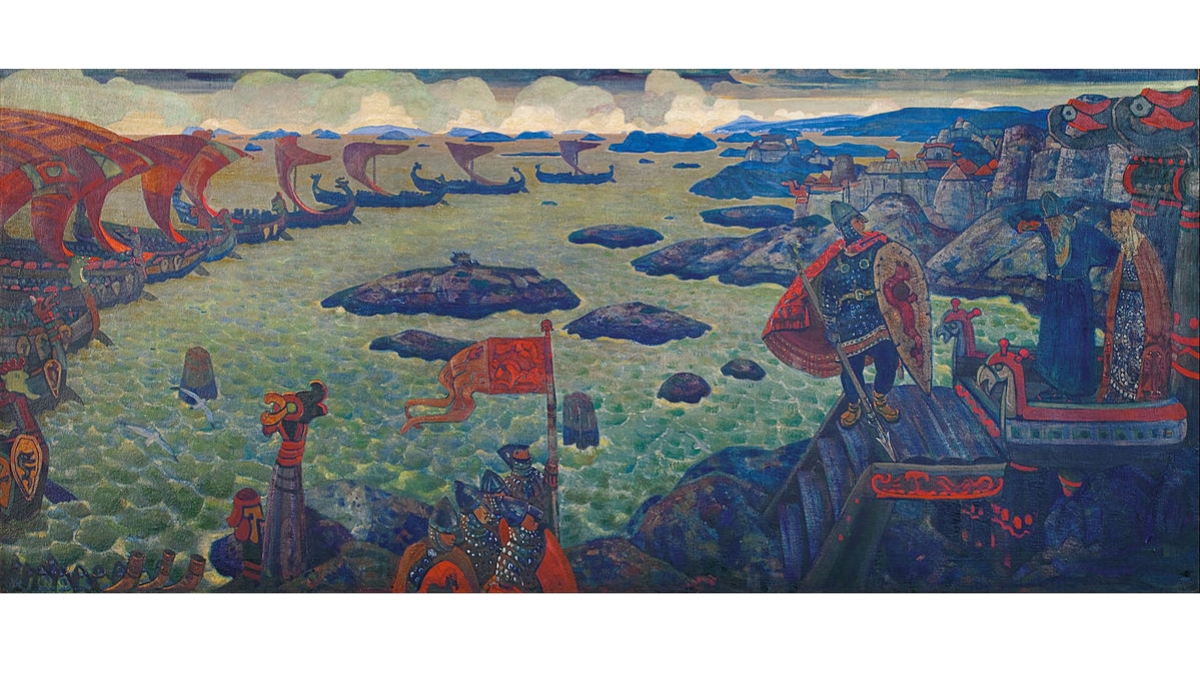
Shields were generally considered less valuable than swords due to their construction and lifespan. Made of lighter materials, shields were prone to wear and tear, requiring frequent repair or replacement.
Unlike swords, which could last a lifetime with proper maintenance, shields had a shorter operational life.
Given these durability concerns, any shields that the Varangian Guard initially brought with them to the Byzantine Empire would likely not have endured for the long term.
As a result, Varangians would have soon adopted the more robust and strategically designed Byzantine shields for their military service.
Byzantine Shield Design
Byzantine shields, known as skoutaria, were usually of the long “kite” shape, designed for comprehensive body protection.
Round shields were also depicted in Byzantine art but were less common. All Byzantine shields featured a strongly convex shape for deflecting attacks.
Once Varangians were integrated into the Byzantine military, it’s probable they adopted the prevalent kite-shaped Byzantine shields.
This would align them more closely with the rest of the Byzantine army, and provide them the advanced protection offered by Byzantine shield design.
Legacy of the Varangian Guard
The Varangian Guard was an elite military unit symbol of the fusion between Viking valor and Byzantine military innovation.
Their diverse arsenal, featuring everything from powerful Danish axes to intricately crafted armor and helmets, was a testament to their adaptability and prowess.
Serving as the personal bodyguards of Byzantine emperors, their role went beyond mere muscle; they were a vivid demonstration of the might and sophistication of a blended martial culture.
Today, they are remembered for their fearsome reputation on the battlefield and their unique place at the intersection of Western and Eastern military traditions. Their legacy endures as a compelling chapter in the rich tapestry of medieval warfare.
